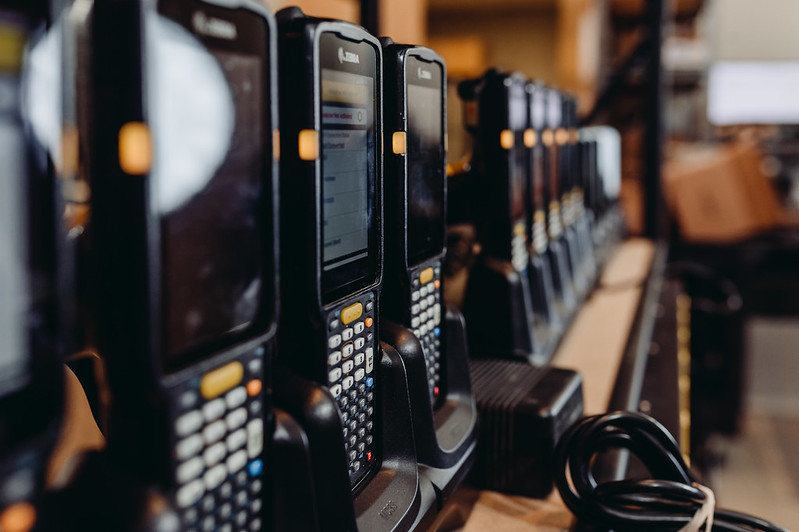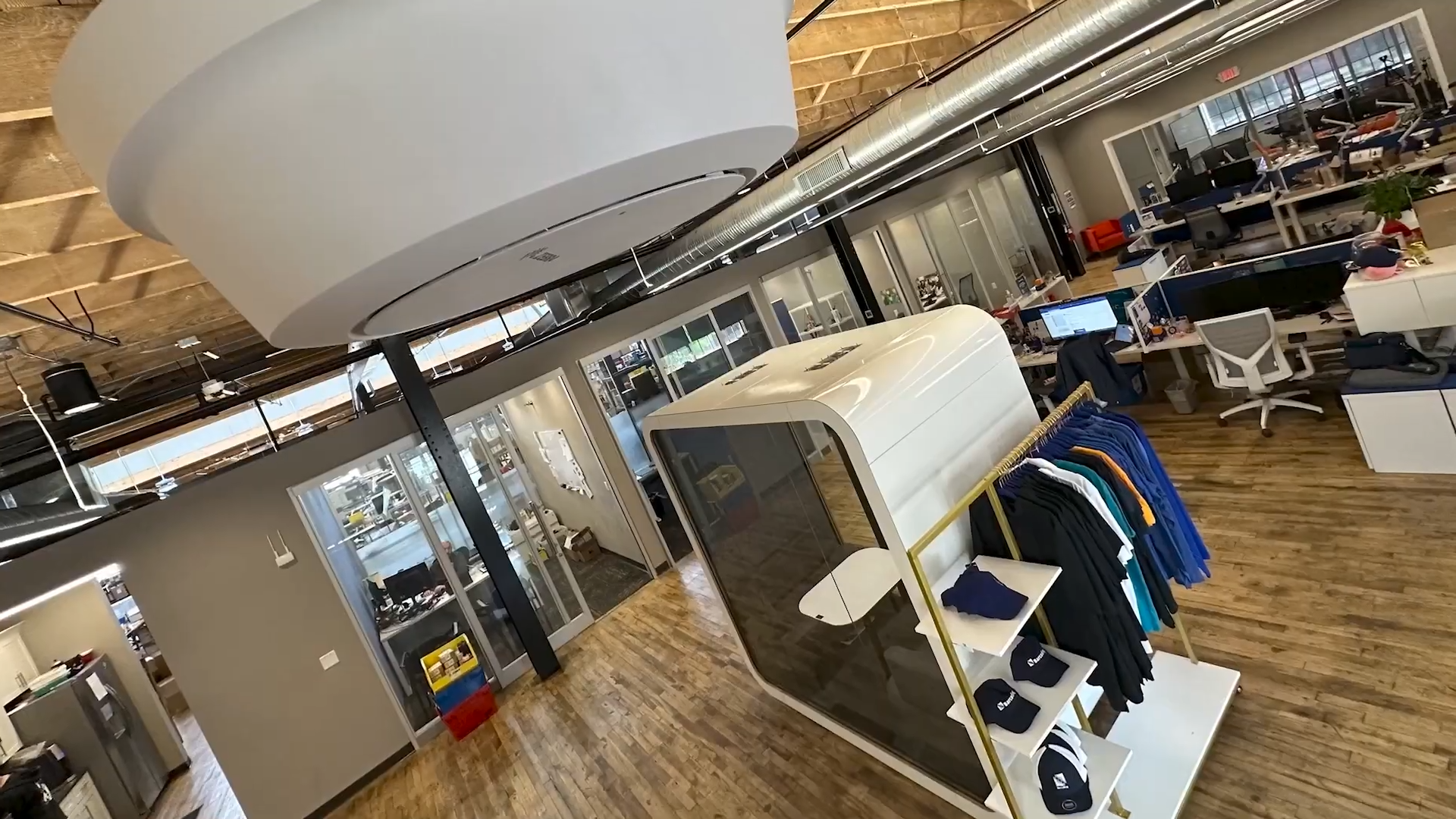Radio frequency identification (RFID) systems are everywhere. Industries as varied as retail, farming, healthcare, human resources, airline/airport, and the military rely on this technology to track their assets—whatever those assets might be. As long as you can stick a tag on it, you can use RFID to monitor and manage it.
RFID has become ubiquitous because it’s very cost-effective and helps optimize supply chain performance, all while saving organizations significant time and money. Let’s take a look at how it works, where it’s best used, and how it can benefit you.
How Do RFID Asset Tracking Systems Work?
RFID systems use short-range radio waves to send data from assets (boxes in a warehouse, for example) to devices designed to capture the information. The simplest and most affordable systems consist of just a handheld RFID reader (with an integrated antenna) and RFID tags.
- RFID tags are affixed to each asset and constantly transmit data to an antenna (either integrated into the reader, or separate from it). RFID tags are capable of storing a lot of information, from a single serial number to pages of relevant data—anything from manufacture date, condition, and temperature, to serial number, location, movements, and storage requirements. Whatever matters to the organization—and can be digitized—can be loaded onto a tag for capture.
- There are three types of tags—active, passive, and semi-passive—and which are used depends on the use case.
- Active tags are battery powered (and transmit continuously), with a range of up to around 50 feet
- Passive tags have no internal power source but are instead powered by the RFID reader or antenna—and have a lower signal range than active tags
- Semi-passive tags are a hybrid of these two, having both internal batteries and an antenna and RFID chip. They’re typically used in situations where the asset is in close proximity to the RFID reader
- RFID readers use internal antennas to emit radio waves in order to get signals back from the RFID tags (or, in more complex systems, connect wirelessly to the antenna in order to get the information). Readers are typically mobile, meaning users are able to carry them wherever they go, but can also be mounted (for example, high on a post that enables them to “see” a large portion of a warehouse). RFID readers assess information in real time, and can relay the data to a software system to be stored and referenced as needed.
This is an example of a basic RFID system; more sophisticated solutions may also include multi-port readers, GPIO boxes that interact with the reader, multiple antennas and cables, added functionality, and associated software.
Where Can RFID Technology Be Used?
“Where can’t it?” is a better question! RFID asset tracking is a “no-brainer” for the Warehousing & Logistics industry, but really any organization that would like to better manage its assets will benefit from deploying an RFID solution.
Here are some of the business types that leverage RFID in order to improve the efficiency of their supply chains and businesses:
- Transportation – track movement and location of vehicles and shipments, control access, monitor condition of assets
- Agriculture – monitor chain of custody; track animals, environments, irrigation, crops, machinery
- Pharmaceutical & Healthcare – improve patient workflows, control access to medications, monitor temperature of supplies
- IT – track equipment, control access
- Manufacturing – validate raw materials and finished goods, improve security, enable damage reporting and diagnosis
- Education – track resources, student accounts, and equipment; control access
- Energy – manage tools, control access, monitor hazardous materials, manage regulatory compliance, monitor worker safety
Benefits of Using RFID for Asset Tracking
There’s virtually no business, regardless of size, type, or industry, that doesn’t need to maximize efficiency and improve the customer experience, especially with today’s increasingly complicated (and competitive) supply chain challenges.
Tracking assets using RFID technology gives decision makers the accurate data they need, in real time, to take actions that lead to improvements in:
- Worker productivity
- Inventory mix and stock levels
- Shipping
- Labor costs
- Error reduction
Another benefit of the visibility RFID systems provide is a reduction in misplaced assets and theft. Many industries are particularly prone to theft, but with RFID tracking every tagged item can be triangulated to pinpoint its exact location at all times. The benefit to the Construction industry, which reports losses of $1 billion every year...just in copper alone! Add losses of lumber, tools, and equipment, and you can quickly understand the value of tracking.
The Cost of RFID Asset Tracking: An Example
So, what will all this visibility cost you? RFID systems—even the more complex ones—are relatively inexpensive and easy to deploy and run, and benefit small to medium-sized businesses just as much as those with multiple locations and warehouses.
As an example of the payback some industries can expect after implementing an RFID system, statistics put the ROI for the Retail sector at about 200%. According to Loss Prevention magazine, retailers can speed cycle counts by 25 times those done with manual bar code scanning, and help them achieve 99% inventory accuracy. They’re also more quickly alerted of replenishment needs, improving on-floor availability and decreasing out-of-stocks by up to 30%. All this leads to sales increases of up to 10%.
RFID vs. Barcode
So, how does RFID compare to barcodes, you ask? Well, both have their place, and which you use will depend on the nature of your assets, how and where they’re warehoused, how much inventory you have, and other considerations. In general, though, RFID does have some distinct advantages over barcodes:
- RFID technology is able to capture the data from several tags at once (and 40 tags can be scanned in the time it takes to scan a single barcode), without the need for the tag to be in physical sight of the reader. Barcodes must be scanned individually, and this presents the risk of missing one or more. This feature alone makes RFID highly attractive to organizations with large inventories in large warehouses
- RFID tags can hold more information than a barcode, allowing you to create a much more specific identification for items, tracking, monitoring, and storing data
- RFID tags and readers have larger signal ranges; barcode scanners must be in close proximity to barcode labels in order to capture their data
In short, barcodes are ideal for businesses with smaller inventories and that don’t need a high level of automation; RFID is preferred for large inventories and complex processes that benefit from being automated.
When you consider all its features and benefits—cost, flexibility, effectiveness, and others—it’s clear that to many industries and situations, RFID’s power to streamline and automate asset tracking is invaluable. If you’d like to know more about the technology and how it can drive efficiencies in your business, we’re ready to talk—just click the link below to start a conversation with our experts!







